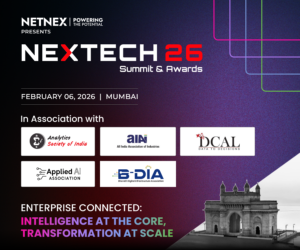By Dr Rachana Chowdhary, Editor, India Technology News
Data leaks pose a critical risk to organizations across all industries, exposing sensitive information, damaging reputations, and leading to costly legal and regulatory consequences. In today’s digital age, traditional methods of data protection are often insufficient against the sophisticated tactics used by cybercriminals and inadvertent insider threats. This is where AI-powered Data Loss Prevention (DLP) comes into play, offering advanced, intelligent methods for safeguarding sensitive data.
This article explores how AI-powered DLP helps prevent data leaks, covering best practices, real-world examples, and the role of AI in improving data security.
Understanding AI-Powered Data Loss Prevention (DLP)
Data Loss Prevention (DLP) is a set of strategies and tools designed to prevent unauthorized access, transfer, or sharing of sensitive information. Traditional DLP systems rely on predefined rules and patterns, but these can be bypassed by modern threat actors who continuously adapt their tactics. AI-powered DLP solutions, on the other hand, leverage machine learning and natural language processing to analyze data contextually, detect anomalies, and adapt to evolving threats. AI-driven DLP identifies sensitive data, automates threat detection, and mitigates potential leaks before they can cause damage.
Key Benefits of AI in Data Loss Prevention
- Contextual Analysis: AI-powered DLP goes beyond keyword detection by analyzing data context and user intent, distinguishing between legitimate data transfers and risky activities.
- Anomaly Detection: By learning typical user behavior, AI can detect unusual patterns, such as excessive file downloads or unauthorized data access, indicating a potential data leak.
- Real-Time Response: AI enables DLP systems to react immediately to threats, blocking unauthorized transfers or alerting security teams, minimizing the window of exposure.
- Scalability and Flexibility: AI-driven DLP systems can operate across various environments, from on-premises infrastructure to cloud and mobile devices, providing seamless, scalable data protection.
Best Practices for Implementing AI-Powered DLP
To leverage the full potential of AI-powered DLP, organizations should follow a structured, proactive approach. Below are some best practices for implementing and maximizing the effectiveness of AI-enhanced DLP.
1. Identify and Classify Sensitive Data
A comprehensive data classification process is essential before implementing DLP policies. AI-powered DLP tools use machine learning to categorize data based on sensitivity levels, such as personal identification information (PII), financial data, and intellectual property. Once data is classified, organizations can apply targeted policies to protect it more effectively.
For example, an AI-driven DLP system might tag certain documents containing PII, such as customer addresses, and enforce policies to restrict sharing or downloading outside secure networks.
2. Define and Enforce Granular Data Protection Policies
Effective DLP requires well-defined policies outlining how different types of sensitive data should be managed. AI-driven DLP systems support complex, granular policy configurations, enabling organizations to tailor protections based on user roles, data categories, and contextual risk factors.
For instance, a company might establish a policy that restricts employees from accessing sensitive financial data remotely unless they are connected to a secure VPN. With AI’s ability to dynamically enforce policies based on location, device, and behavior, these policies adapt to varying conditions.
3. Implement Real-Time Monitoring and Anomaly Detection
One of the significant advantages of AI-powered DLP is its ability to monitor data activity in real-time. Machine learning algorithms analyze and establish behavioral baselines, which allows the DLP system to detect deviations from normal activity patterns. This proactive detection is critical for spotting insider threats or compromised accounts.
For example, if an employee suddenly attempts to download a large amount of sensitive data outside business hours, AI-based anomaly detection will flag this activity, enabling immediate investigation and response.
4. Utilize Natural Language Processing (NLP) for Contextual Detection
Sensitive information can sometimes be embedded within documents, emails, or messages. NLP capabilities allow AI-powered DLP to understand the context of data, identifying and flagging sensitive information even when it’s hidden within complex text structures.
Suppose an employee tries to send an email containing confidential client information in a conversational context. NLP capabilities would detect this sensitive data and prevent the message from being sent or notify the compliance team, thus avoiding potential data leakage.
5. Automate Incident Response and Remediation
When a potential data leak is detected, prompt action is essential to mitigate risks. AI-powered DLP solutions can automate responses, such as blocking file transfers, revoking access, or alerting the security team in real-time. Automated remediation minimizes the response time, significantly reducing the chances of a successful data leak.
In a financial firm, for instance, if an unauthorized attempt is made to upload client data to an external cloud service, the DLP system might immediately block the attempt and send an alert to the security team for further investigation.
6. Integrate with Cloud and Mobile Environments
Today’s workforce is mobile and cloud-enabled, meaning sensitive data frequently moves between devices, applications, and cloud platforms. AI-powered DLP solutions must integrate with cloud storage providers and mobile environments to provide holistic data protection. Cloud-based DLP tools utilize AI to secure data across these environments, ensuring consistent policy enforcement regardless of where the data is accessed.
Consider the case of an Indian financial institution using AI-powered DLP to prevent data leaks. The organization was experiencing an increase in accidental data exposures due to employees sharing files through unauthorized channels. After deploying an AI-enhanced DLP solution, the institution was able to classify sensitive data accurately, enforce granular policies, and monitor real-time data activity.
One day, the system flagged unusual behavior when an employee tried to share sensitive client information through personal email. The AI-powered DLP system blocked the transfer, and an investigation revealed the employee was unaware of the sensitivity of the data. The automated response not only prevented a data leak but also served as an opportunity to educate the employee on data security protocols.
Elevating Data Security with AI-Powered DLP
As organizations face growing data security challenges, AI-powered DLP solutions offer an essential safeguard against data leaks. By combining data classification, behavioral analysis, real-time monitoring, and automation, AI-enhanced DLP provides comprehensive protection against both insider threats and external attacks.
AI-powered DLP transforms data protection from a reactive measure to a proactive security strategy, empowering organizations to prevent data leaks effectively and secure sensitive information in an ever-evolving digital landscape.







